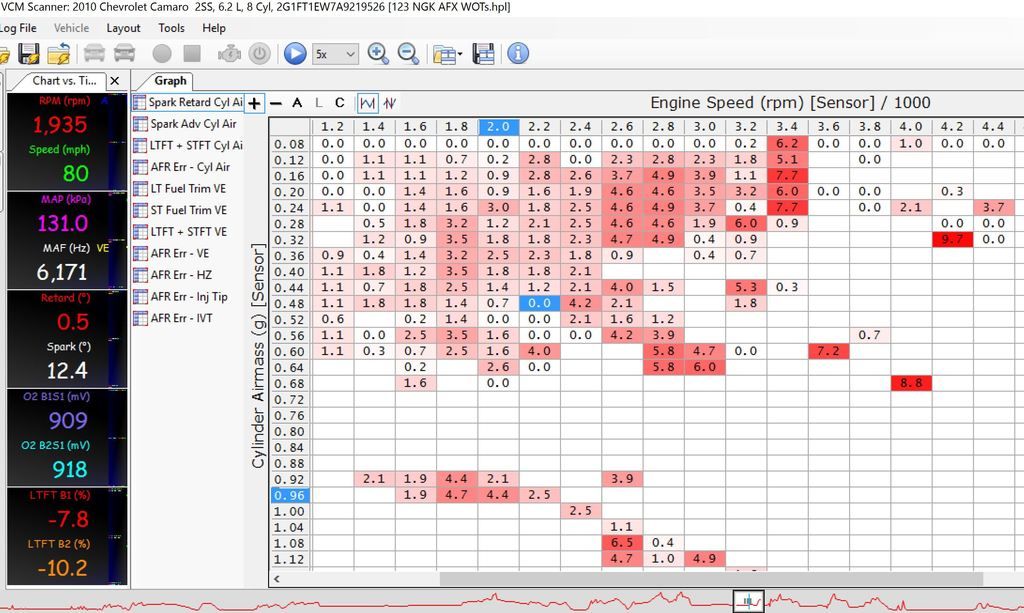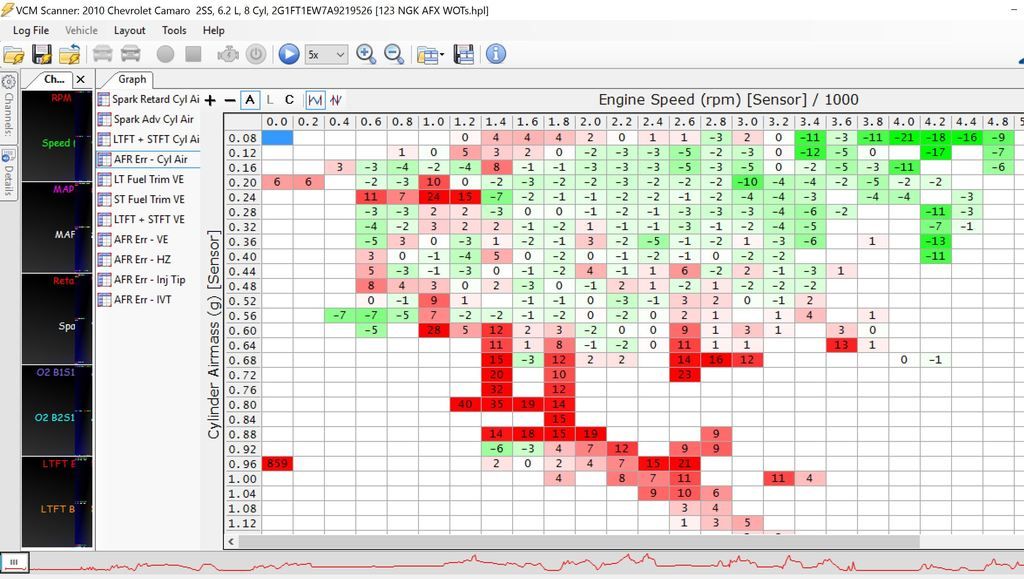I decided to update my NGK AFX which has been wired in perfectly with a relay at the battery for power and all grounds (HPTuners and NGK) wired right at the Batt Negative terminal... Finally got it tuned in solid over the last 3yrs... LOG attached of that (123 NGK AFX WOTs.hpl)
Now updated to the latest and greatest fast AEM 30-0300 with the great Dr. Mike CAN update... which is AWESOME by the way.. so easy... I actually laughed when I saw the "new" CAN address show up in the list of PID's...
But now this "ultra accurate" WB reading is showing me my fueling is no longer anywhere near accurate... and of course now Im wondering, since the NGK AFX had to deal with extra grounding to make the analog input signal correct, then what does something like WOT full load with a MSD BAP do to your AFX/MPVI PRO and really you only check it a few times unloaded (hard to compare WOT display vs. actual HPTuners reading).. with the AEM 30-0300 CAN, the signal is supposed to be 100% spot on and seems to be...
So... after thinking about this for awhile.. which data log would you trust?
If I want a finished tune, I say NGK AFX.... but then now this much faster "more accurate" AEM 30-0300 is showing my tune to be a hot mess...
Camaro_AFX.Layout.xml
Camaro.Layout.xml
Edit: It took me 3yrs to get my fueling right with the NGK AFX. It took me 2 weeks to get it right with the AEM 30-0300. Im not sure which one is "right", but I can tell you which one makes more sense.




 Reply With Quote
Reply With Quote





